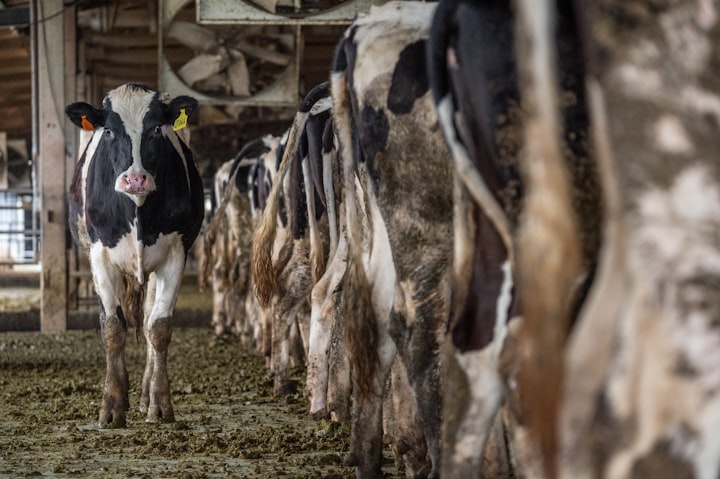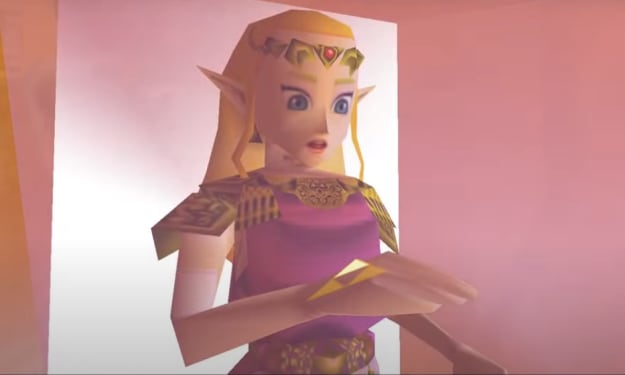Animal Agriculture: The Number One Cause of Environmental Degradation Today
How we can personally save the planet through changing our diets.

Animal agriculture is the number one leading cause of environmental degradation, and contributes to world hunger by outcompeting land that could grow crops for starving human beings. By the end of these paragraphs, I will convince you that you can directly contribute to the end of climate change. Together we can bring hope to billions of people for a healthy Earth. I will show you that the collective global community can single-handedly save the environment within a projected 20 years time through math and pragmatic thinking. First I will go through the problem. Then I will turn it around in a positive, take-action light, giving you tools to make a change.
Animal Agriculture Causes the Most Emissions
First, I will address Carbon Emissions. According to the documentary “Cowspiracy: The Sustainability Secret”, it is not merely the collective human population that is generating waste. Rather, we must recognize the global population of cattle, pigs, and chickens that contribute.
The meat and dairy industry produces more greenhouse gas emissions than the entire transportation industry. While the transportation industry produces roughly 30% of global carbon emissions, the animal agriculture industry produces roughly 50%. This amounts to more than all the trucks, cars, boats, planes, and trains currently active. Methane emissions from livestock are 86% more destructive than carbon dioxide from vehicles (Cowspiracy, 2014).

Animal agriculture produces 65% of the worlds nitrous oxide, which seeps into our oceans and has created 500 “oceanic dead zones” (Cowspiracy, 2014). The devastation continues: Humans occupy a lot of land, but cattle occupy 45% of Earths land and is responsible for up to 91% of the destruction of the Brazilian Amazon. Overgrazing builds up to habitat loss. Only 2% of todays planet is inhabited by free roaming wildlife, in comparison to the past.

Animal Agriculture Uses Too Much Water
Oil fracking is notorious for degrading the environment. Fracking uses 100 billion gallons of water every year in the US alone. Think that’s wasteful?
Get this: The production of livestock consumes 34 trillion gallons of water per year. Another comparison is that the average Californian uses 1,500 gallons of water per day. About 50% of that water use is related to the consumption of meat and dairy products - that is 750 gallons of water per person per day (Cowspiracy, 2014).
I thought I was saving the planet by cutting down on home water use. Between the short showers and brushing my teeth without the water flowing, I saved about 47 gallons of water per day. Meanwhile, domestic use of water is a mere 5% annually, yet agriculture uses 55% of water in the U.S. The mere consumption of a ¼ lb hamburger is a calculated 660 gallons of water, when you factor in the production.

Animal Agriculture Causes World Hunger
What about the humans involved in this? Well, in developing countries, children starve. This is happening in proximity to animal farms, where 80% of the food production such as cattle farming is shipped out of the country to wealthier countries such as the US and UK. It does not mean that 80% of that food is the physical meat itself. It's actually crops like genetically modified soybeans or corn that only animals eat. According to the Humane Society, those soybeans are used to feed cattle, pigs, and chickens on factory farms. If all of that land were put toward humans growing non-animal products, then it would be enough to feed every human being on earth.

Overfishing Is Killing Our Oceans
500 Oceanic dead zones exist right now due to Animal Agriculture. This is because when all of those cows poop, their waste generates methane. When it rains, the waste reaches the waterways. All of the waterways eventually lead to the ocean, so all of that waste causes dead zones.
What's worse is that every time fish are caught, 5% of what's in the net is also "Bi-Catch". It can include non-preferred fish, sharks, and more. By 2050, there will be no more fish in the ocean. According to The Guardian,
"There are almost no fish or shellfish we can safely eat. Recent scandals suggest that even the Marine Stewardship Council label, which is supposed to reassure us about the fish we buy, is no guarantee of sound practice. For example, the council certified tuna fisheries in which endangered sharks had been caught and finned; and, in UK waters, it has approved scallop dredging that rips the seabed to shreds."
This supports the claim that there is no true "Sustainable Fishing". Scandals like these happen in the United States, UK, and more.
The Positive Impact You Will Have
What can I do? How can I make a difference? How can I turn this around? You have come to the right gal. I couldn’t comprehend the magnitude of everything without the visual graphics and videography from the documentary, “Cowspiracy: The Sustainability Secret”. I recommend you watch it and also consider how good it can feel to contribute. Sure, you might end up giving up beef or all meat, but there is so much more to gain.
Every time you say no to a beef patty, you SAVE 660 gallons of water production. That’s enough to flood someone's yard. Second, 80% of methane emissions in the agricultural industry come from cattle while a mere 20% come from chicken. If you start slow and just cut out cattle, you have probably cut about 80% of your carbon emissions from your life. Third, PER DAY you will save the following: 1,100 gallons of water, 45 lbs of grain, 30 square feet of rainforest, 10 lbs of CO2 emissions, and 1 animal's life.
Conclusion
I have a challenge for you to try, because it can be hard to make a change sometimes: Give up eating beef for one month. That is only beef, nothing else given up, for 30 days. If you do, you will immediately save 33,000 gallons of water, 1,350 pounds of grain, 900 square feet of rainforest, 300 lbs of CO2 Emissions, and 30 animals lives.
All resources are listed below. Also, please feel free to read more articles on my blog!
My Blog
Resources:
“Cowspiracy: The Sustainability Secret” web page and documentary download, along with resources like a meal planner.
The Humane Society World Hunger Report: “The Impact of Industrialized Animal Agriculture On World Hunger”
https://awellfedworld.org/livestock-climate-advanced/
Review of articles “Livestock and Climate Change”, and the “UN Global Warming Report: Livestocks Long Shadow”
https://awellfedworld.org/wp-content/uploads/Livestock-Climate-Change-Anhang-Goodland.pdf
The physical copy of “Livestock and Climate Change”
https://awellfedworld.org/wp-content/uploads/pdf/UNGlobalWarmingReport.pdf
The physical copy of the full 408 page “Un Global Warming Report: Livestocks Long Shadow”
"Stop Eating Fish: It is the only way to Save the Life in Our Seas"
About the Creator
Kate Nitzschke
Hey! I'm a gamer, who also works outside for a living, who also likes to write about personal growth. Thanks for visiting my blog.






Comments
There are no comments for this story
Be the first to respond and start the conversation.